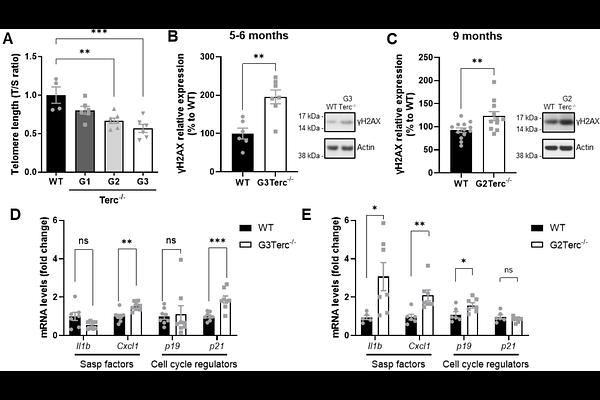Telomere-driven senescence accelerates tau pathology, neuroinflammation and neurodegeneration in a tauopathy mouse model

Telomere-driven senescence accelerates tau pathology, neuroinflammation and neurodegeneration in a tauopathy mouse model
Palomares, D.; Vanparys, A.; Jorgji, J.; Paitre, E.; Kienlen-Campard, P.; Suelves, N.
AbstractBackground: Although the connection between aging and neurodegenerative pathologies like Alzheimer\'s disease (AD) has long been recognized, the underlying pathological mechanisms remain largely unknown. Senescent brain cells build up in the brains of AD patients and a causal link has been established between senescence and AD-related tauopathy. Methods: To investigate the role of cellular senescence in tau-mediated neuropathology, we crossed the Terc knockout (Terc-/-) senescent mouse model with the P301S tauopathy model (PS19 line). Using brain sections and protein extracts, we employed Western blot and immunostaining analyses to investigate the expression of tau-related neuropathological features within a senescent context. Results: We found that the brains of 6- and 9-month-old Terc-/- mice exhibit significant telomere attrition and signs of cellular senescence. Introducing a senescent phenotype in a tauopathy mouse model resulted in increased tau phosphorylation at key residues, particularly in the hippocampus. Over time, this was associated with enhanced tau truncation and aggregation. These pathological changes were accompanied by exacerbated astrocyte and microglial activation, as well as selective neuronal loss in vulnerable brain regions. Conclusions: Overall, our findings place senescence as a key upstream regulator of tau pathology, suggesting that targeting senescent cells and their detrimental effects may offer promising therapeutic strategies for AD and other related tauopathies.